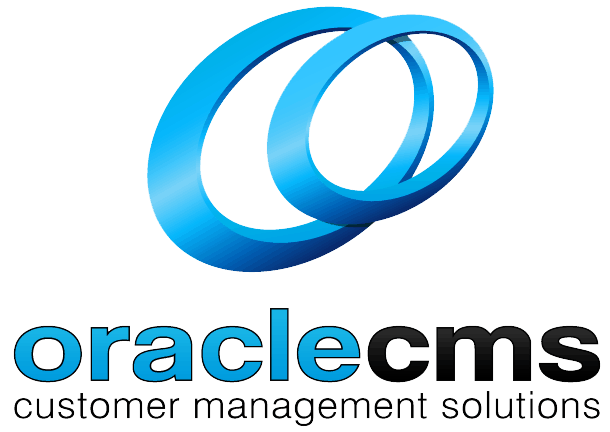
Integrating Chatbots with Call Centres for Seamless Customer Support
As businesses strive to meet the ever-growing expectations of their customers, the integration of custom chatbots with call centres has emerged as a powerful solution. By combining the efficiency of automated responses with the personalised touch of human agents, companies can provide seamless, round-the-clock customer support. This article explores the benefits, implementation strategies, and best practices for integrating chatbots with call centres to enhance customer service.
Benefits of Integrating Chatbots with Call Centres
Enhanced Customer Experience
Integrating chatbots into call centres offers an improved customer experience by providing instant responses to common queries and ensuring customers receive help as soon as they need it. Chatbots can handle multiple inquiries simultaneously, reducing wait times and allowing human agents to focus on more complex issues. This balance leads to faster resolution times and higher customer satisfaction.
Increased Efficiency and Reduced Wait Times
Chatbots excel in managing high call volumes, which can be particularly beneficial during peak periods or emergencies. By automating routine tasks and answering frequently asked questions, chatbots free up human agents to concentrate on more demanding tasks, thus reducing overall wait times and improving operational efficiency.
Cost Savings and Resource Optimization
The use of chatbots can significantly reduce operational costs. Businesses save on staffing costs by using chatbots to handle repetitive tasks that would otherwise require human intervention. Additionally, the efficiency gained from chatbot integration allows call centres to operate with fewer resources while maintaining or even improving service quality.
24/7 Customer Support
One of the standout benefits of chatbots is their ability to provide continuous, 24/7 support. Customers can get assistance outside of regular business hours, ensuring that no query goes unanswered. This round-the-clock availability can greatly enhance customer trust and loyalty, as they know they can reach out and receive help whenever they need it.
Types of Chatbot Integrations in Call Centres
Simple Query Handling and FAQ Management
The most basic form of chatbot integration involves handling simple queries and managing frequently asked questions (FAQs). These chatbots provide quick answers to common customer inquiries, such as opening hours, pricing, or account information, without needing to involve a human agent.
Advanced Chatbots with AI and Machine Learning Capabilities
Advanced chatbots leverage artificial intelligence (AI) and machine learning to understand and respond to more complex customer queries. These chatbots can learn from previous interactions to improve their responses over time, making them more effective and accurate in providing customer support.
Hybrid Models: Combining Human Agents and Chatbots
In a hybrid model, chatbots and human agents work together to deliver customer support. The chatbot handles the initial interaction, answering simple questions or gathering information, before transferring the call to a human agent if the issue requires more detailed assistance. This model ensures that customers receive efficient, yet personalized service.
Steps to Implement Chatbot Integration in Call Centres
Assessing Business Needs and Objectives
Before implementing chatbot technology, it’s crucial to assess your business needs and objectives. Determine the specific tasks you want the chatbot to handle and how this integration aligns with your overall customer service strategy.
Choosing the Right Chatbot Technology
Selecting the right chatbot technology is key to successful integration. Consider factors such as the complexity of customer inquiries, the chatbot’s ability to learn and adapt, and how well it can integrate with your existing systems.
Training and Setting Up the Chatbot
Once the technology is chosen, the next step is to train the chatbot. This involves programming it with scripts, FAQs, and decision trees to ensure it can handle various customer scenarios. The chatbot should also be tested extensively before going live to ensure it performs as expected.
Integration with Existing Call Centre Systems
For seamless operation, the chatbot must be integrated with your existing call centre systems, such as CRM software and communication platforms. This integration allows for smooth transitions between the chatbot and human agents and ensures that all customer interactions are logged and accessible for future reference.
Customization and Personalization
Tailoring Chatbot Responses
To maintain brand consistency, it’s important to customize the chatbot’s responses to reflect your company’s tone and style. Tailored responses help ensure that customers have a cohesive experience across all touchpoints, enhancing the overall perception of your brand.
Personalizing Customer Interactions with Data
Integrating the chatbot with your CRM system enables it to access customer data and history, allowing for more personalized interactions. For example, the chatbot can greet customers by name, recall previous issues, and provide recommendations based on past purchases or inquiries.
Integration with Omnichannel Support
Unified Customer Experience
To provide a seamless customer experience, chatbots should be integrated across all communication channels, including web, mobile, social media, and email. This omnichannel approach ensures that customers receive consistent support no matter how they choose to contact your business.
Coordinating Between Chatbots and Live Agents Across Channels
Effective coordination between chatbots and live agents is crucial when customers switch from one channel to another. For instance, if a customer starts an interaction via a chatbot on your website and then calls the support line, the live agent should have access to the previous conversation to provide a smooth transition and avoid asking the customer to repeat information.
Impact on Customer Satisfaction and Retention
Measuring Customer Satisfaction Post-Integration
After implementing chatbot integration, it’s important to measure its impact on customer satisfaction. Metrics such as Net Promoter Score (NPS), Customer Satisfaction Score (CSAT), and Customer Effort Score (CES) can provide valuable insights into how well the chatbot is performing and where there may be room for improvement.
Improving Customer Retention Rates
By providing quick and efficient support, chatbots can play a key role in improving customer retention. Customers who receive prompt assistance are more likely to remain loyal to your brand, reducing churn and increasing lifetime value.
Ethical and Social Considerations
Bias and Fairness in AI-Driven Chatbots
It’s essential to ensure that chatbots are programmed without biases that could affect customer interactions. AI-driven chatbots should be designed to treat all customers fairly and inclusively, regardless of background or characteristics.
Customer Trust and Transparency
Transparency is key to building trust with your customers. Make sure customers are aware when they are interacting with a chatbot and ensure that the chatbot communicates when it is escalating the interaction to a human agent. Additionally, assure customers that their data is being handled securely and in compliance with privacy regulations.
ROI and Business Impact
Calculating the ROI of Chatbot Integration
To determine the return on investment (ROI) from chatbot integration, consider factors such as cost savings from reduced staffing needs, increased efficiency, and improved customer satisfaction. Analyzing these metrics can help businesses understand the financial impact of integrating chatbots with their call centres.
Long-Term Business Impact
In the long term, chatbot integration can lead to significant benefits, including scalability, enhanced data analytics, and stronger customer relationships. As chatbots become more sophisticated, their ability to handle complex tasks will continue to grow, further enhancing their value to businesses.
Compliance and Legal Considerations
Ensuring Compliance with Data Protection Laws
When implementing chatbots, it’s crucial to ensure that they comply with data protection regulations, such as GDPR, CCPA, or industry-specific laws. This includes managing customer data responsibly and ensuring that the chatbot only collects and processes information that is necessary for the task at hand.
Handling Sensitive Information
Chatbots must be programmed to handle sensitive information with care. This includes implementing security measures such as encryption and multi-factor authentication to protect customer data during interactions.
Challenges and Considerations in Chatbot Integration
Managing Customer Expectations
It’s important to set realistic expectations for what your chatbot can do. Communicate its capabilities and limitations to customers to avoid frustration and ensure a positive experience.
Ensuring Data Security and Privacy
Data security is a top priority when integrating chatbots with call centres. Businesses must implement robust security measures to protect customer information and ensure that the chatbot adheres to privacy regulations.
Balancing Automation with Human Touch
While chatbots are excellent for handling routine tasks, there are times when a human touch is necessary. Ensuring a smooth handoff from the chatbot to a human agent is crucial for addressing complex or sensitive customer issues.
Continuous Monitoring and Improvement
Chatbot performance should be continuously monitored to identify areas for improvement. Regular updates and adjustments based on customer feedback and analytics will help ensure that the chatbot remains effective and relevant.
Best Practices for Seamless Integration
Defining Clear Use Cases for Chatbots
Identify specific use cases where chatbots can add the most value, such as handling simple inquiries, processing orders, or providing basic tech support. This focus will help ensure that the chatbot is used effectively and enhances the overall customer experience.
Regular Updates and Maintenance
To keep the chatbot performing optimally, regular updates and maintenance are essential. This includes updating scripts, adding new capabilities, and addressing any issues that arise during operation.
Collecting and Analyzing Customer Feedback
Gathering customer feedback is crucial for understanding how well the chatbot is meeting customer needs. Use this feedback to make necessary adjustments and improve the chatbot’s performance over time.
Training Call Centre Staff to Work with Chatbots
Human agents should be trained on how to collaborate effectively with chatbots. This includes understanding when to take over an interaction and how to use the information provided by the chatbot to resolve customer issues efficiently.
Impact on Call Centre Agents
Changing Roles and Responsibilities
The integration of chatbots will inevitably change the roles and responsibilities of call centre agents. Agents may need to focus more on handling complex or high-value interactions, leaving routine tasks to the chatbot. This shift can lead to more fulfilling and challenging work for agents, as they move away from repetitive tasks and towards more engaging problem-solving roles.
Collaboration Between Chatbots and Human Agents
Effective collaboration between chatbots and human agents is key to providing seamless customer support. Agents should view the chatbot as a valuable tool that can assist them in their roles, rather than as a competitor. By working together, chatbots can handle the initial, simpler queries and gather essential information, which allows human agents to step in with a clear understanding of the customer’s needs, providing a more efficient and personalized service.
Training Agents to Handle Complex Inquiries
As chatbots take over simpler tasks, human agents will need to be trained to handle more complex inquiries. This might involve additional training in problem-solving, customer empathy, and advanced product knowledge. Continuous learning and development will be crucial for agents to keep up with the evolving demands of their roles.
Future Trends in Chatbot and Call Centre Integration
Advancements in AI and Natural Language Processing (NLP)
The future of chatbot and call centre integration is set to be shaped by advancements in AI and NLP. As these technologies continue to improve, chatbots will become more adept at understanding and processing complex human language, enabling them to handle a wider range of customer queries with greater accuracy.
The Role of Voice-Activated Assistants
Voice-activated assistants, like Amazon’s Alexa and Google Assistant, are becoming increasingly popular. Integrating these voice-activated systems with call centres could revolutionize customer support by allowing customers to interact with businesses through voice commands, further enhancing the convenience and accessibility of customer service.
Predictive Analytics and Personalization
Predictive analytics will play a significant role in the future of chatbot integration. By analyzing past interactions and customer data, chatbots will be able to anticipate customer needs and offer personalized solutions before the customer even articulates their query. This proactive approach can significantly enhance the customer experience and lead to higher satisfaction and retention rates.
Wrapping Up
Integrating chatbots with call centres offers businesses a powerful tool to enhance customer support, improve efficiency, and reduce costs. By carefully selecting the right technology, training both chatbots and human agents and continuously monitoring and optimizing performance, businesses can create a seamless, hybrid support system that meets the evolving needs of their customers. As technology continues to advance, the role of chatbots in customer service will only grow, making it an essential consideration for any forward-thinking business.
FAQs
Q1: What are the main benefits of integrating chatbots with call centres?
A1: Integrating chatbots with call centres enhances customer experience by providing instant responses, increasing efficiency by reducing wait times, saving costs by automating routine tasks, and offering 24/7 support.
Q2: How do chatbots and human agents work together in a hybrid model?
A2: In a hybrid model, chatbots handle initial interactions, answering simple questions and gathering information. More complex queries are then passed to human agents, who can provide detailed assistance.
Q3: What challenges might businesses face when integrating chatbots with call centres?
A3: Challenges include managing customer expectations, ensuring data security and privacy, balancing automation with the need for human interaction, and maintaining continuous improvement through monitoring and updates.
Q4: How can businesses ensure that their chatbots provide a personalized customer experience?
A4: Businesses can ensure personalized experiences by integrating chatbots with CRM systems, allowing them to access customer data and tailor interactions based on individual preferences and history.
Q5: What are the future trends in chatbot and call centre integration?
A5: Future trends include advancements in AI and NLP, the integration of voice-activated assistants, and the use of predictive analytics to anticipate customer needs and offer personalized solutions.



